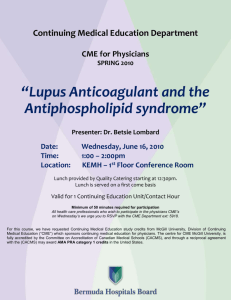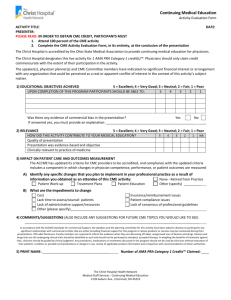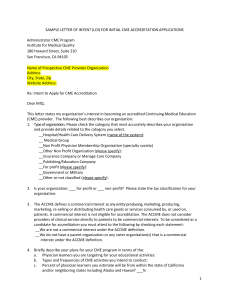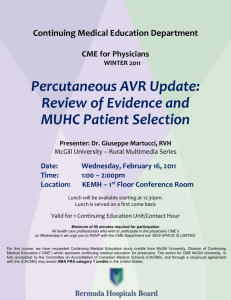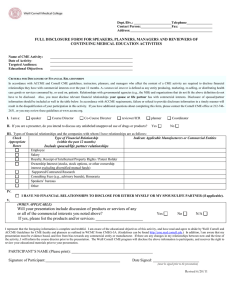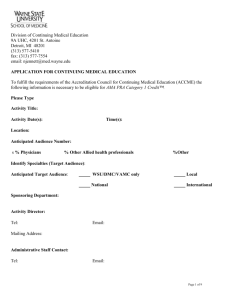ACCREDITATION COUNCIL FOR CONTINUING
advertisement
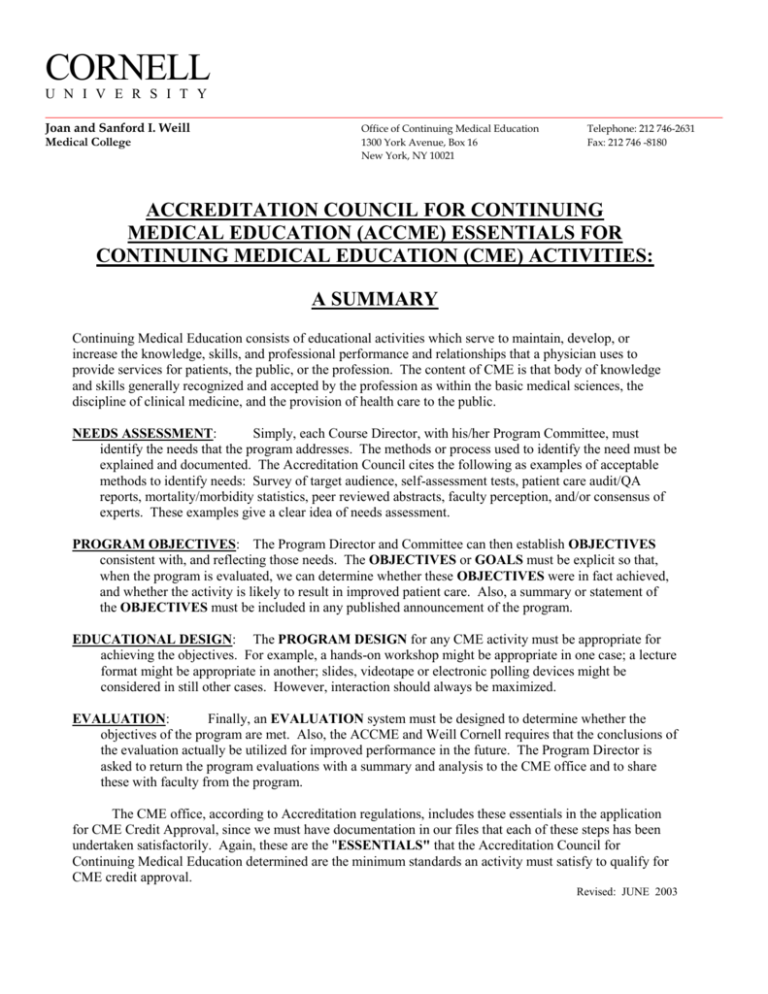
CORNELL U N I V E R S I T Y Joan and Sanford I. Weill Medical College Office of Continuing Medical Education 1300 York Avenue, Box 16 New York, NY 10021 Telephone: 212 746-2631 Fax: 212 746 -8180 ACCREDITATION COUNCIL FOR CONTINUING MEDICAL EDUCATION (ACCME) ESSENTIALS FOR CONTINUING MEDICAL EDUCATION (CME) ACTIVITIES: A SUMMARY Continuing Medical Education consists of educational activities which serve to maintain, develop, or increase the knowledge, skills, and professional performance and relationships that a physician uses to provide services for patients, the public, or the profession. The content of CME is that body of knowledge and skills generally recognized and accepted by the profession as within the basic medical sciences, the discipline of clinical medicine, and the provision of health care to the public. NEEDS ASSESSMENT: Simply, each Course Director, with his/her Program Committee, must identify the needs that the program addresses. The methods or process used to identify the need must be explained and documented. The Accreditation Council cites the following as examples of acceptable methods to identify needs: Survey of target audience, self-assessment tests, patient care audit/QA reports, mortality/morbidity statistics, peer reviewed abstracts, faculty perception, and/or consensus of experts. These examples give a clear idea of needs assessment. PROGRAM OBJECTIVES: The Program Director and Committee can then establish OBJECTIVES consistent with, and reflecting those needs. The OBJECTIVES or GOALS must be explicit so that, when the program is evaluated, we can determine whether these OBJECTIVES were in fact achieved, and whether the activity is likely to result in improved patient care. Also, a summary or statement of the OBJECTIVES must be included in any published announcement of the program. EDUCATIONAL DESIGN: The PROGRAM DESIGN for any CME activity must be appropriate for achieving the objectives. For example, a hands-on workshop might be appropriate in one case; a lecture format might be appropriate in another; slides, videotape or electronic polling devices might be considered in still other cases. However, interaction should always be maximized. EVALUATION: Finally, an EVALUATION system must be designed to determine whether the objectives of the program are met. Also, the ACCME and Weill Cornell requires that the conclusions of the evaluation actually be utilized for improved performance in the future. The Program Director is asked to return the program evaluations with a summary and analysis to the CME office and to share these with faculty from the program. The CME office, according to Accreditation regulations, includes these essentials in the application for CME Credit Approval, since we must have documentation in our files that each of these steps has been undertaken satisfactorily. Again, these are the "ESSENTIALS" that the Accreditation Council for Continuing Medical Education determined are the minimum standards an activity must satisfy to qualify for CME credit approval. Revised: JUNE 2003





